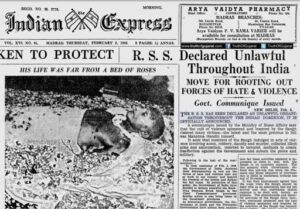A killer can kill again. But, can the dead die again?
In Nellie, they can. In fact, they have died many times over since that fateful late winter day 40 years ago.
On February 18, 1983, a huge mob of Tiwa, Koch, caste Hindu Assamese and members of other local communities brutally slaughtered more than 2,000 Bengal-origin Muslims in and around Nellie, a town in the central Assam district of Morigaon (back then, Nagaon district).
If one has to go by the total number of people killed in any anti-minority pogrom in post-independence India, the Nellie carnage sits somewhere at the top. The Gujarat pogrom of 2002 and the Bombay riots that followed the Babri Masjid demolition by Kar Sevaks in 1992 come close. And if unofficial accounts are to be believed, more than 7,000 were butchered in Nellie, which marks it out as the deadliest anti-minority pogrom in modern India.
What makes Nellie particularly unique was that unlike in other similar cases, not a single individual faced justice for the exceptional act of mass murder. The official inquiry report of the Tiwari Commission remains classified till today. There is not one memorial anywhere in India that commemorates the massacre. In that sense, the violence of Nellie never stopped. It continued in the form of systematic erasure, imposed silences, intellectual obfuscations, and complete denial of justice to the victims. From the Indian state to the civil society, everyone participated in this organised memoricide.
I was born in Assam and grew up there. Yet, no one in my family or friends told me about Nellie. I read about it much later in my life. It was just not a part of collective memory or dinner table discourse in caste Hindu families in the state. But, I’m sure everyone who lived through the 1980s – our parents, grandparents, uncles, aunts or elder siblings – knew about it. They must have also known who the killers were or who incited them. But, most of them had either crafted a subconscious mental story to rationalise their ignorance or simply dismissed it as a stray local clash.
Everyone was responsible for Nellie, so no one was responsible for Nellie.
But, Nellie didn’t happen in a vacuum. It unfolded in the middle of the anti-foreigner Assam movement (1979-85). The physical violence flowed directly from the emotive violence generated by the agitation, which sought the expulsion of “illegal Bengalis/Bangladeshis” from Assam. Besides their homemade weapons, the killers were also armed with the ethno-majoritarian vocabularies that the movement leaders propagated day in and day out.
As Makiko Kimura’s seminal study of the massacre, The Nellie Massacre of 1983: Agency of Rioters, finds rumours about impending attacks by Muslims on Tiwa villages became the immediate prompts for the slaughter (as in the case of many such pogroms worldwide). A good chunk of these rumours, Kimura notes, were legitimised by members of the All Assam Students’ Union (AASU) – a leading organisation behind the movement. The result was a preemptive attack on the unsuspecting Muslim victims by a mixed group of agitating activists and local villagers who didn’t directly participate in the movement but were swept up by its sentiments.
Kimura’s study, largely based on interviews with members of the perpetrator communities, identifies “self-defence […] as the most important factor in decision-making regarding the attack”. However, she also identifies broader sociopolitical narratives about the “outsider” – specifically Muslims of East Bengali origin, pejoratively referred to as “Miyas” and “Mymensinghias” (those from Bangladesh’s Mymensingh district) – as a key driving force behind the violence.
One village elder from Nellie told Kimura:
“It was not a clash between Hindus and Muslims, but it was targeted against miyas. Miyas are immigrants who came from Bangladesh. The movement aimed to deport bideshis [foreigners]. Thus it was targeted against miyas, particularly Mymensinghias.”
The local nativist diatribe, as Arun Shourie, who was then a correspondent with India Today, found received a booster shot from elements of the Rashtriya Swayamsevak Sangh (RSS) who infiltrated the movement to drive up anti-Muslim sentiments.
“Link-up of RSS elements and the agitation at many places indicate a strong possibility of much communal disturbances in sensitive pockets just prior to the election or immediately after the election,” a government assessment report from before the violence warned.
But, one must avoid the lure of attributing Nellie to the RSS or Jan Sangh, as many often try to do. The concoction of hatred, fear and fury that killed over two thousand Muslims in Assam that day was brewed locally. External entities like the RSS only washed their hands in it for their own vested interests, poisoning it further in the process.
Yet, today, we see a more comfortable fusion of these complex, multi-layered vocabularies of otherisation. The regional and the national have come together against a common enemy – the Muslim “invader”. In fact, ethno-racial pejoratives (like “Miya”) have become a ubiquitous aspect of mainstream and social media rhetoric in Assam. The state and its social allies continue to deploy them liberally to dehumanise, displace and disenfranchise them. And the broader justification remains the same as it was during Nellie – to protect the “indigenous” from the “outsiders.”
Notably, Kimura, while conducting interviews for her study, found that members of the perpetrator communities were more willing to talk to her than those from the victim community. This struck me as profoundly unsettling. The killer continues to carry a degree of confidence that the victim doesn’t possess. He is vocal about his act of killing, perhaps because he doesn’t regret it. He has a justification for it that he is willing to share. The victims, on the other hand, have taught themselves to reflexively suppress their own trauma to avoid another round of violence. They have chosen life over memory.
The other notable thing about Nellie was how the state preempted the violence but abjectly failed to prevent it. Arun Shourie’s brilliant investigative report in the March 15, 1983 issue of India Today found that the police had specific information about the impending attacks three days before it happened. But, they didn’t do anything about it. The state simply withdrew when the match hit the gas. Even as the killers went on their rampage, the state melted away from Nellie and its surrounding areas, creating an alternative order of Hobbesian anarchy. As Shourie noted in his report, despite receiving reports of the attack in the morning, the police and paramilitary didn’t reach the killing fields until 3 pm in the afternoon.
The ghosts of Nellie continue to roam free in not just Assam, but all of India today. They haunt our cities, towns and villages; our government buildings, police stations, and courts of law; our tea stalls, news studios, universities and party offices. They silently, and sometimes menacingly, remind us of the lingering possibility of another Nellie. They remind us, perhaps failingly even, that all the ingredients of the massacre – anti-minority hate speech, nationalist xenophobia, state inertia, and impunity for perpetrators – remain very much present in our social, political and cultural milieu.
Nellie is just another historical metaphor for what we have become as a country today. And that is probably why it remains buried deep inside the vault where all things bad and ugly go in for the sake of the nation. Most of us are comfortable keeping that vault tightly shut. But, somewhere in there, without even digging too deep, one may find the painful memories of the victims who were asked to “move on” without the promise of justice.
[Angshuman Choudhury is an Associate Fellow at the Centre for Policy Research, New Delhi. Courtesy: The author’s newsletter, ‘Barbed Wires’.]




